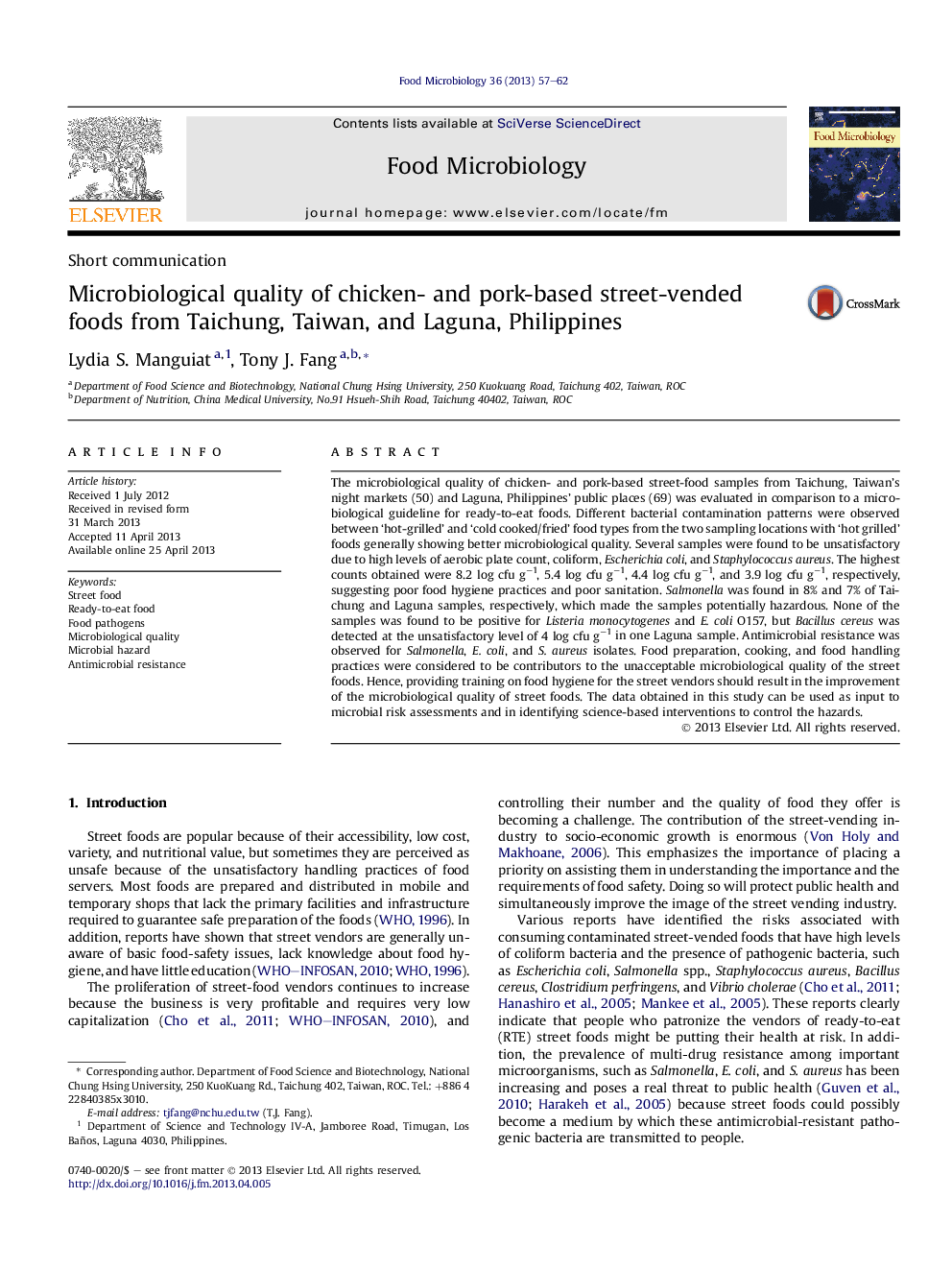| Article ID | Journal | Published Year | Pages | File Type |
|---|---|---|---|---|
| 6288712 | Food Microbiology | 2013 | 6 Pages |
Abstract
The microbiological quality of chicken- and pork-based street-food samples from Taichung, Taiwan's night markets (50) and Laguna, Philippines' public places (69) was evaluated in comparison to a microbiological guideline for ready-to-eat foods. Different bacterial contamination patterns were observed between 'hot-grilled' and 'cold cooked/fried' food types from the two sampling locations with 'hot grilled' foods generally showing better microbiological quality. Several samples were found to be unsatisfactory due to high levels of aerobic plate count, coliform, Escherichia coli, and Staphylococcus aureus. The highest counts obtained were 8.2 log cfu gâ1, 5.4 log cfu gâ1, 4.4 log cfu gâ1, and 3.9 log cfu gâ1, respectively, suggesting poor food hygiene practices and poor sanitation. Salmonella was found in 8% and 7% of Taichung and Laguna samples, respectively, which made the samples potentially hazardous. None of the samples was found to be positive for Listeria monocytogenes and E. coli O157, but Bacillus cereus was detected at the unsatisfactory level of 4 log cfu gâ1 in one Laguna sample. Antimicrobial resistance was observed for Salmonella, E. coli, and S. aureus isolates. Food preparation, cooking, and food handling practices were considered to be contributors to the unacceptable microbiological quality of the street foods. Hence, providing training on food hygiene for the street vendors should result in the improvement of the microbiological quality of street foods. The data obtained in this study can be used as input to microbial risk assessments and in identifying science-based interventions to control the hazards.
Related Topics
Life Sciences
Agricultural and Biological Sciences
Food Science
Authors
Lydia S. Manguiat, Tony J. Fang,
